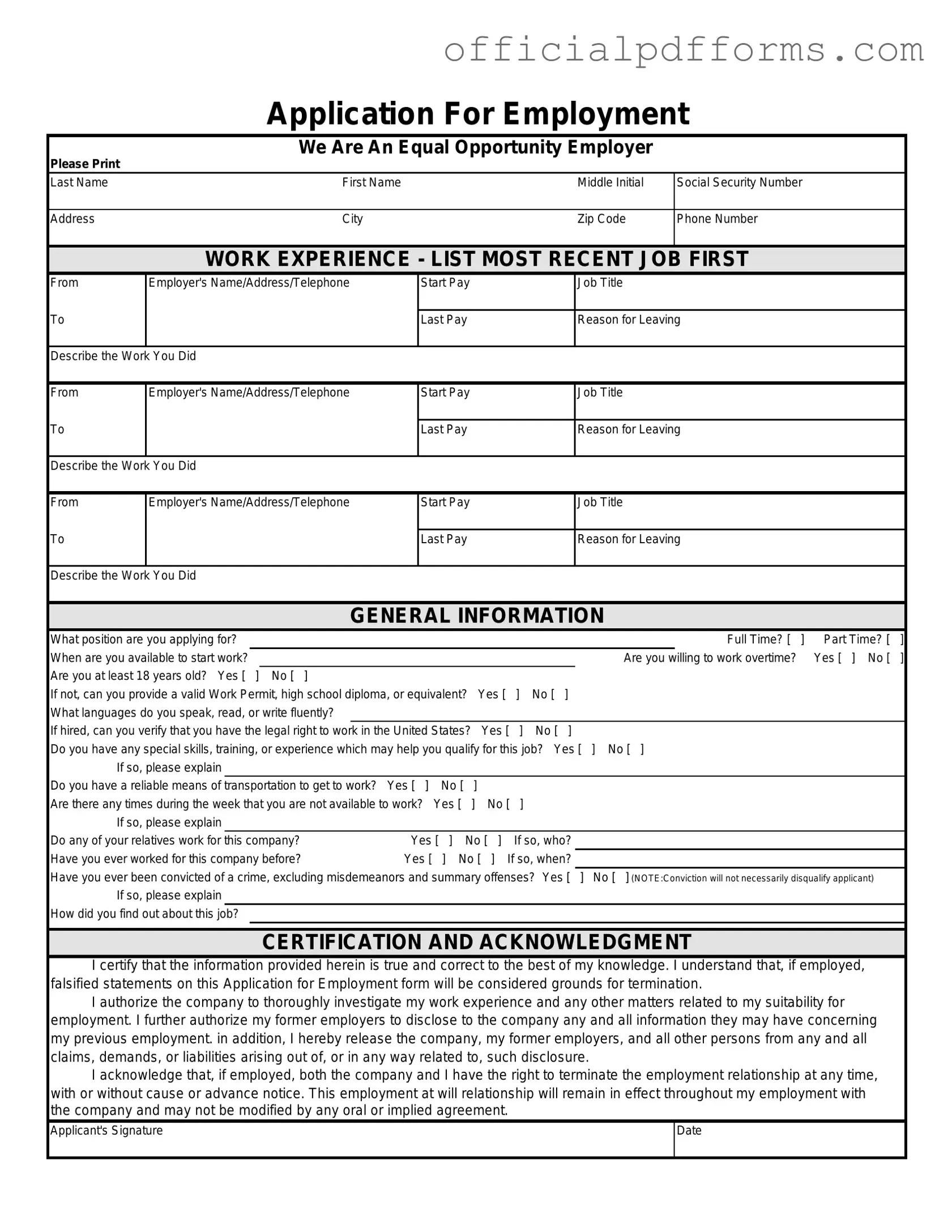En el formulario, se requiere que proporciones tu nombre completo, número de seguro social, dirección, número de teléfono y detalles sobre tu experiencia laboral más reciente. También necesitarás indicar la posición para la cual estás solicitando y tu disponibilidad para comenzar a trabajar.
¿Cuáles son los requisitos de edad para aplicar?
Debes tener al menos 18 años para solicitar empleo. Si no tienes esa edad, se te pedirá que proporciones un permiso de trabajo válido, un diploma de secundaria o un documento equivalente.
¿Necesito proporcionar referencias laborales?
El formulario no solicita referencias directamente, pero se autoriza a la empresa a investigar tu experiencia laboral. Es recomendable tener referencias disponibles si se te piden más adelante en el proceso.
¿Qué sucede si tengo antecedentes penales?
El formulario pregunta si has sido condenado por un crimen, excluyendo delitos menores. Una condena no necesariamente te descalificará, pero es importante ser honesto en tu respuesta.
¿Puedo aplicar si no hablo inglés con fluidez?
El formulario permite que indiques qué idiomas hablas, lees o escribes con fluidez. Si el trabajo no requiere un dominio del inglés, puedes ser considerado para el puesto, dependiendo de las necesidades de la empresa.
¿Qué debo hacer si no tengo transporte confiable?
El formulario pregunta si tienes un medio de transporte confiable para llegar al trabajo. Si no lo tienes, considera cómo planeas resolver este problema antes de enviar tu solicitud.
¿Puedo solicitar empleo si tengo habilidades especiales o entrenamiento?
Sí, el formulario te permite explicar cualquier habilidad especial, entrenamiento o experiencia que pueda ayudarte a calificar para el trabajo. Esto puede ser un factor positivo en tu solicitud.
¿Cómo puedo verificar mi derecho a trabajar en los Estados Unidos?
Si eres contratado, deberás proporcionar documentación que demuestre tu derecho legal a trabajar en el país. Esto puede incluir una tarjeta de residencia, un pasaporte o un documento de autorización de empleo.
Si tienes dudas sobre cómo completar el formulario, no dudes en contactar a la empresa. Ellos estarán dispuestos a ayudarte y aclarar cualquier inquietud que puedas tener.
